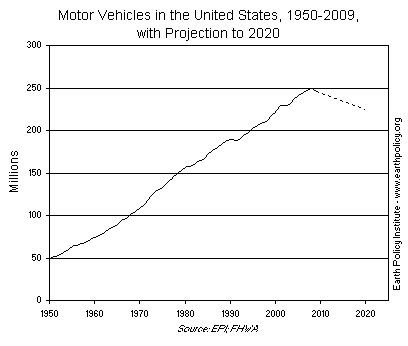As the electric vehicle market expands, the biggest names in automobile manufacturing are drawn towards adapting some of their latest models to the plug instead of gasoline. While Japan has had little issue with creating entire lines of hybrid and electric vehicles, some of
automobile
 Cars promise mobility, and in a largely rural setting they provide it. But in an urbanizing world, where more than half of us live in cities, there is an inherent conflict between the automobile and the city. After a point, as their numbers multiply, automobiles provide not mobility but immobility, as well as increased air pollution and the health problems that come with it. Urban transport systems based on a combination of rail lines, bus lines, bicycle pathways, and pedestrian walkways offer the best of all possible worlds in providing mobility, low-cost transportation, and a healthy urban environment.
Cars promise mobility, and in a largely rural setting they provide it. But in an urbanizing world, where more than half of us live in cities, there is an inherent conflict between the automobile and the city. After a point, as their numbers multiply, automobiles provide not mobility but immobility, as well as increased air pollution and the health problems that come with it. Urban transport systems based on a combination of rail lines, bus lines, bicycle pathways, and pedestrian walkways offer the best of all possible worlds in providing mobility, low-cost transportation, and a healthy urban environment.
Some of the most innovative public transportation systems, those that shift huge numbers of people from cars into buses, have been developed in Curitiba, Brazil, and Bogotá, Colombia. The success of Bogotá’s Bus Rapid Transit (BRT) system, TransMilenio, which uses special express lanes to move people quickly through the city, is being replicated not only in six other Colombian cities but in scores elsewhere too, including Mexico City, São Paulo, Hanoi, Seoul, Istanbul, and Quito. By 2012, Mexico City plans to have 10 BRT lines in place.
Between 1950 and 2008 more cars were added to our roads virtually every year as the total fleet expanded steadily from 49 million to 250 million vehicles. In 2009, however, 14 million cars were scrapped while only 10 million cars were sold, shrinking the fleet by 4 million vehicles, or nearly 2 percent. With record numbers of cars set to reach retirement age between now and 2020, the fleet could shrink by some 10 percent, dropping from the all-time high of 250 million in 2008 to 225 million in 2020.
The United States, with 246 million motor vehicles and 209 million licensed drivers, is facing market saturation. With 5 vehicles for every 4 drivers, the 4-million-vehicle contraction in the U.S. fleet in 2009 does not come as a great surprise. In a largely rural society, more cars provided mobility, but in a society that is now over 80 percent urban, more cars provide immobility.
This post is part of a series on high speed rail across the world. Make sure to read previous posts on the US, Germany, and France.
England has added itself to the growing list of countries redesigning its transportation paradigm to include high speed rail. With the launch of the Javelin line from London to Kent this past December, the British government has ushered in a new era of travel in the British Isles. The Javelin travels east/west and has cut the rail travel time from along this route from 80 minutes to just over a half hour.
The Javelin is the first British high speed rail passenger service and will soon be part of a much bigger network that will link England’s major urban areas with a service that travels at 220 mph. An ambitious north-south corridor is planned that will run from London and end in Edinburgh Scotland. “It will radically modernise our transport infrastructure and bring about a significant shift of traffic from car and the plane to the train, while potentially transforming the geography of our country as our cities are bought closer together,” proclaims UK Transportation Minister Lord Adonis.
